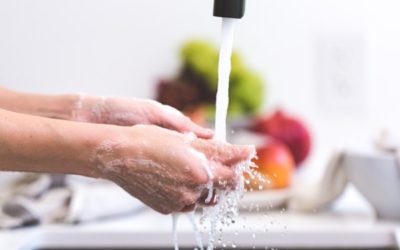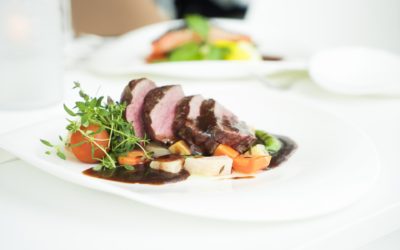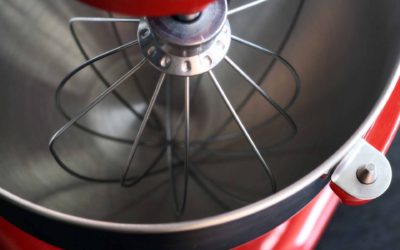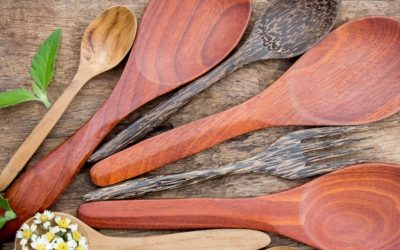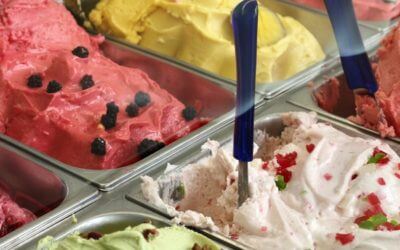How to Make Your Silverware Sparkle and Shine
June 1, 2017No one wants to eat off of dirty or tarnished silverware.
While it’s easy to clean silverware of leftover food, the tarnishing will still linger unless you take steps to make your silverware shine. To make the best impression on your guests, your silverware should not just be clean. It should sparkle. There are detergents that can get back the sparkle of your silverware, but you can also use common ingredients from your restaurant kitchen to make them shine.
- Alcohol
Alcohol may also be used to clean tarnished silverware, but it has one limitation: it may not be effective for heavily tarnished silverware. To utilize this method, mix four parts water with one part rubbing alcohol. Using a soft cloth, dip into the mixture and wipe your silverware until you achieve a sparkling surface.
- Salt and baking soda
An effective way to achieve sparkling silverware is the use of aluminum foil, salt and baking soda. Line a bowl with aluminum foil and add a teaspoon each of salt and baking soda to a cup of hot water. You can increase the amounts depending on the amount of silverware to be cleaned. Fill the bowl with boiling water and add your mixture and silverware, ensuring that the silverware is not overlapping. You can also add half a cup of vinegar to the mixture to speed up the process.
This method is quick. Depending on the level of tarnishing, you may leave the silverware to soak anywhere between 30 seconds and several minutes. When the silverware looks tarnish-free, pull it out using a tong, as the water will still be hot. Buff it and dry it well. And you’re done!
- Baking soda alone
If you’re running low on salt, you can use baking soda by itself – it will just take a bit longer. Cover the silverware with a generous amount of baking soda. Now is the time for patience. Let the silverware and baking soda sit for at least 30 minutes. After this time, any stains will be ready to come off easily. Scrub the silverware lightly with a damp cloth or sponge, rinse it and buff it.
Boric acid can also be used for this method instead of baking soda. However, boric acid, also commonly known as Borax, has recently been found to cause reproductive and developmental health problems in women and children. To protect the health of your valued customers, stay away from the use of boric acid.
Of all the methods listed, the quickest and most effective is the use of baking soda, aluminum foil and salt. You should be aware that aside from your usual cleaning detergents, a number of basic or acidic kitchen products, including ketchup, aluminum foil, toothpaste, baking soda, borax, salt, alcohol and vinegar, can perform magic. If you’re in a pinch or want a more eco-friendly way to clean your silverware, just look around your kitchen!
5 Keys to Creating the Perfect Restaurant Seating Areas
Restaurants are about so much more than just food. From the setting and layout of your restaurant to your choice of colors, it takes a lot more than an appealing menu to keep diners coming back for more. When setting up your restaurant, booths and chairs are important...
5 Essential Buying Tips for Your Next Food Prep Work Table
The right foodservice equipment is pivotal to the efficiency of your kitchen. One of the most important types of foodservice equipment for any kitchen is the work table. With limited room on countertops available for your food prep needs, the cooking process can drag...
Tips for Keeping Your Commercial Sink Sparkling Clean
Your commercial kitchen, just like your personal kitchen, must be kept clean at all times. With all of the cooking and food processing you do, it is inevitable that your sink gets messy. Cleaning up your commercial kitchen is incomplete without proper cleaning of your...
Food-Cutting Secrets to Beautiful Dishes
In the restaurant industry, presentation is often said to be just as important as the food itself. Using the right knowledge, skills and restaurant supplies, you can incorporate creativity into your presentation, making guests feel that they are getting something...
Top Space-Saving Tips for Commercial Kitchens
Top Space-Saving Tips for Commercial Kitchens Space is always an important consideration when setting up a kitchen, and this is even truer for commercial kitchens. With a strong focus on functionality and the kitchen supplies that meet the needs of your commercial...
5 Ways to Get the Most Out of Your Mixer
No one wants to eat off of dirty or tarnished silverware. A stand mixer is a highly useful piece of kitchen equipment to invest in. Although this type of kitchen equipment does not usually come cheap, it can last a lifetime when properly cared for. Despite all your...
Restaurant Prep Tool Selection Simplified
What’s a restaurant kitchen without high-quality prep tools that can withstand the pressure of frequent use? Whether you already have a restaurant you’re running, or you’re just planning to launch one, one vital factor that could make or mar your business is how you...
Beginner’s Guide to Choosing a Commercial Ice Cream Freezer
Ice cream is a delicious and appealing desert treat for everyone, young or old. Having made the decision to sell ice cream to your customers, whether you have a restaurant, convenience store, or specialty ice cream parlor, it is time to begin stocking up on the right...
How to Choose the Right Kitchen Scales for Your Restaurant
A food scale is an essential item in every restaurant’s store of kitchen supplies. Designed to take the guesswork out of food measurement and maintain consistent food serving sizes, food scales are indispensable kitchen supplies in the commercial kitchen. With such a...
Beer Chilling Systems: Which Type Is Right for My Restaurant?
A refrigeration unit is integral to the functioning of any restaurant. Beers are best served cold - there’s no questioning that! But which beer chilling system is the best? From reach-in coolers to glycol chillers, a beer chilling system is an important piece of...
What Equipment Will I Need to run a Food Truck?
There’s a lot of planning that goes into starting your own food truck business. Before you hit the road with your delicious food offerings, you’ll need to fill up your truck with all the right foodservice equipment. Considering the lengthy list of possible items to be...
8 Types of Food Thermometers: What You Need To Know
Food thermometers are essential restaurant supplies for your commercial kitchen. They ensure that foods prepared in your commercial kitchen are cooked to the right temperature and held at that temperature for as long as necessary to kill any harmful bacteria. This...
How to Identify the Best Food Processor for Your Needs
Highly versatile and extremely efficient, food processors are designed to take away the hard work from repetitive kitchen activities. This type of cooking equipment can quickly become an invaluable tool in your kitchen. From chopping, to shredding, grinding, mincing,...
6 Keys to Choosing the Best Chafing Dishes for Your Restaurant
The chafing dish, also known as the chafer, is an essential piece of restaurant equipment for any establishment that wants to keep food hot. This type of restaurant equipment gets its name from the French word, chauffer, which means to heat, and it’s easy to see why....
Turning up the Dial on Commercial Fryers: How to Choose One for Your Restaurant
Fried food is a well-loved favorite. This is a fact. It also makes a fryer an important piece of equipment to have in your commercial kitchen. Just consider how many appetizers and sides require frying: onion rings, French fries, and fried green tomatoes are just a...



